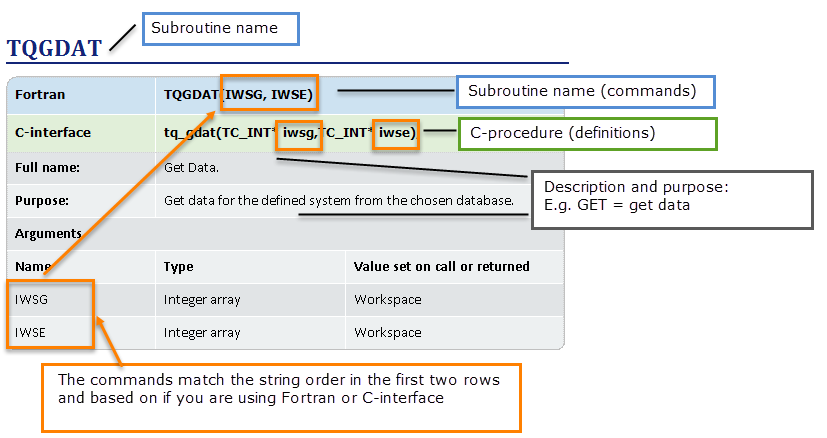TQGPHP
| Fortran |
TQGPHP(INDEXP, NE, NCNV, NC, IWORK, WORK, IWSG, IWSE) |
|
|---|---|---|
| C-interface |
tq_gphp(TC_INT indexp,TC_INT* ne,TC_INT* ncnv,TC_INT* nc,TC_INT* iwork,TC_FLOAT* work,TC_INT* iwsg,TC_INT* iwse); |
|
|
Full name: |
Get phase constitution properties. | |
|
Purpose: |
Getting phase constitution properties such as number of components, number of constituents, number of constituents without counting vacancies, etc. |
|
|
Comments: |
This subroutine is designed to speed up conversions of quantities involving mole fractions and site fractions in dynamic calculations where such operations are needed at each local time and space grid point. For each phase involved, one call of this subroutine is enough for subsequent conversions concerning this phases. See Example 10. |
|
|
Arguments |
||
|
Name |
Type |
Value set on call or returned |
|
INDEXP |
Integer |
Set to a phase index. |
|
NE |
Integer |
Return number of components |
|
NCNV |
Integer |
Return number of constituents without counting vacancies |
|
NC |
Integer |
Return number of constituents |
|
IWORK |
Integer array |
Return values needed in X to Y conversion, array size >= 4*NCNV |
|
WORK |
Double precision array |
Return values needed in X to Y conversion, array size >= (NE+1)*NCNV |
|
IWSG |
Integer array |
Workspace |
|
IWSE |
Integer array |
Workspace |
Note the following conventions to distinguish between the programming languages.
- Routines starting with TQXXX, for example, TQGDAT, are in the Fortran interface
- Routines starting with tq_xxxx, for example tq_gdat, are in the C-interface.
- In Fortran, all routines are subroutines and do not return any values except where explicitly declared as functions.
- All the C procedures are declared as void and do not return any values except where explicitly otherwise declared.
An example of how to read the subroutine definitions.
